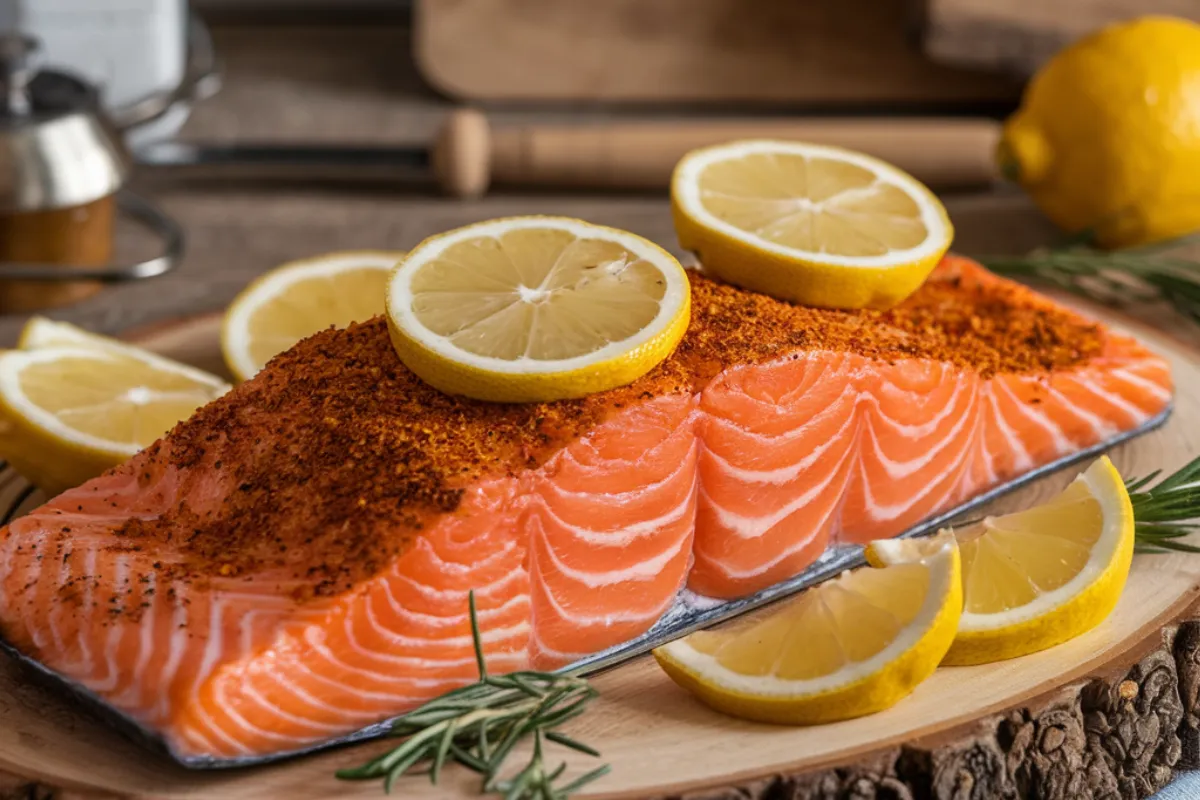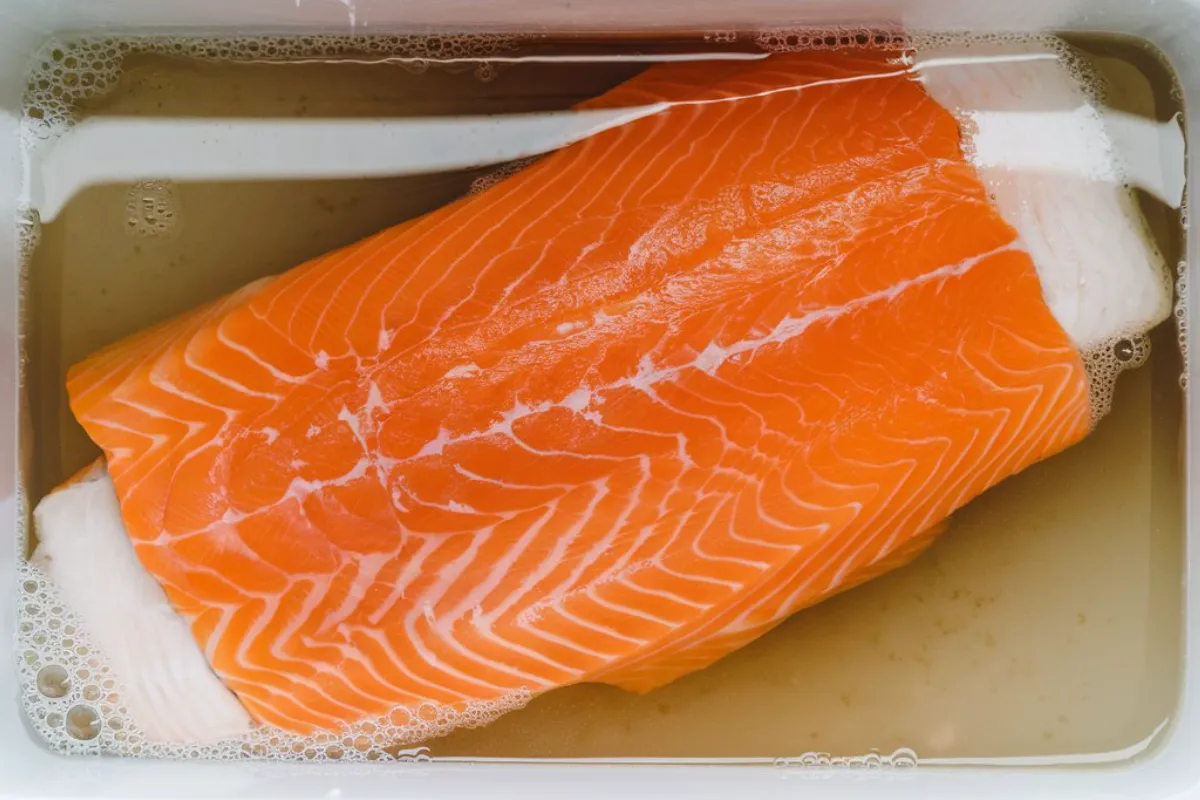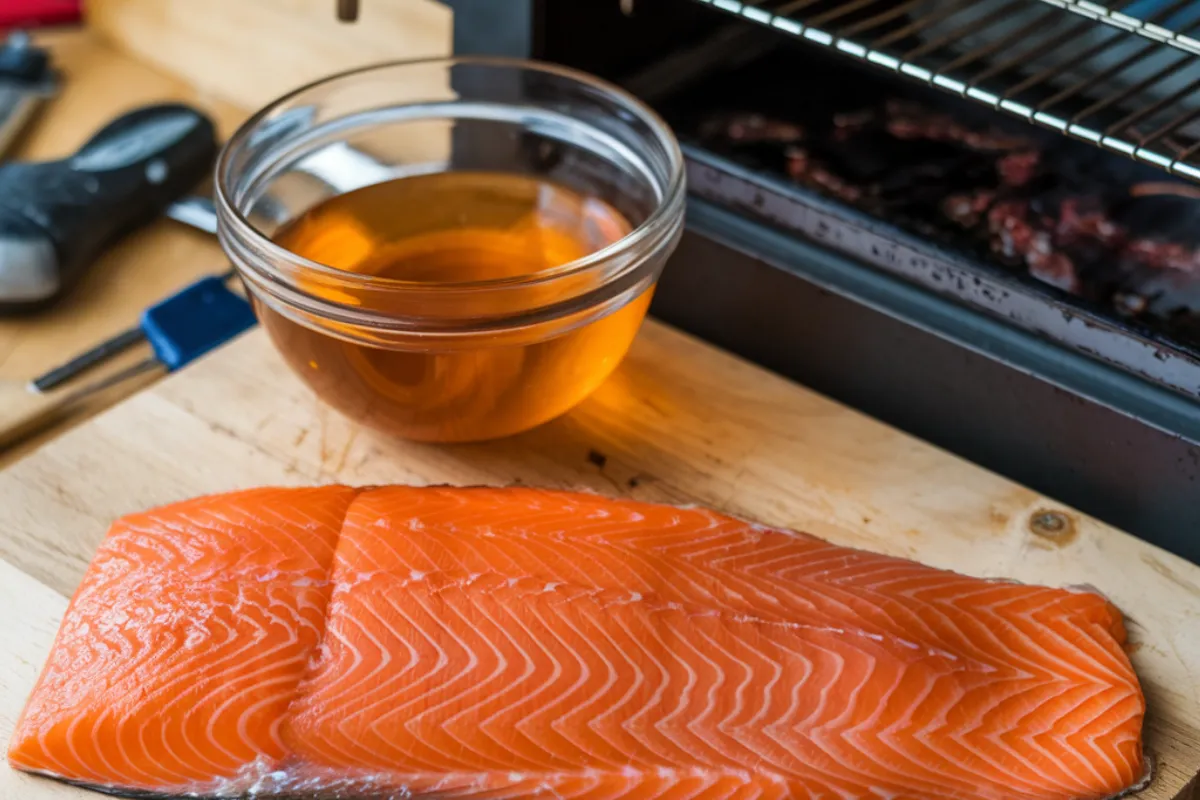
Smoking salmon is a beloved culinary practice that results in a delicious, tender, and flavorful dish. But do you really need to brine salmon before smoking it? The answer depends on what you’re aiming for. Let’s explore the ins and outs of brining, why it’s used, and whether it’s a necessary step in preparing smoked salmon.
What Is Brining?
Brining is a method of soaking meat or fish in a solution of water, salt, and sometimes additional sugar and spices. This process allows the salt to penetrate the fish, ensuring it stays moist while cooking and intensifying the flavors. Brining also contributes to preserving the delicate texture of the fish, preventing it from becoming too dry or rubbery during smoking.
Why Should You Brine Salmon Before Smoking?
One of the main reasons to brine your salmon is moisture retention. Smoking is a low-and-slow cooking process, and without proper preparation, it can easily dry out the fish. Brining helps prevent this by adding moisture to the fish, ensuring a juicy result. It also enhances the flavor, as the salt helps season the fish deeply.
Additionally, brining acts as a subtle flavor enhancer, allowing you to infuse the fish with complementary flavors before smoking. You can add herbs such as dill, thyme, or rosemary to the brine, along with spices like peppercorns, to create a unique flavor profile that will come through in the final smoked product.
Another benefit is that brining helps prevent the formation of albumin, the white protein that sometimes appears on the surface of salmon when cooked. The salt solution helps coagulate the albumin within the meat, leaving the final product visually appealing. For more tips on the benefits of brining and how to do it right, you can check out the brining techniques for beginners.
For those who care about maintaining the vibrant pink color of the fish, brining helps retain the natural hue, avoiding the dull look that often comes with unbrined fish. This makes it particularly important if presentation is a priority. Learn more about food safety for smoking fish to ensure the highest quality when preparing smoked salmon.
Furthermore, brining serves as a natural preservative, helping to extend the shelf life of your smoked fish. The salt works to inhibit bacterial growth, making your smoked salmon safer to store for longer periods of time. This is particularly useful if you plan to make a large batch of smoked salmon and store it for future use.
How to Brine Salmon Before Smoking

If you decide to brine your salmon, follow these steps for the best results:
- Ingredients:
- 1 gallon of cold water
- 1 cup of kosher salt
- 1 cup of sugar (brown sugar for a richer flavor)
- Optional: Fresh herbs, garlic cloves, black peppercorns, or citrus zest for added flavor.
- Process:
- In a large non-reactive container, dissolve the salt and sugar in the water.
- Add optional herbs and spices to infuse additional flavors.
- Place the salmon fillets in the brine, ensuring they are fully submerged.
- Cover and refrigerate for at least 4 hours (for thicker fillets, extend the time to 8 hours).
- Rinse the salmon under cold water to remove excess salt, and pat dry.
- Allow the fish to rest on a wire rack in the refrigerator for an hour to form a pellicle, which will help the smoke adhere.
The pellicle, a thin, tacky layer that forms on the surface of the fish after drying, is essential for successful smoking. It helps the smoke stick to the fish and contributes to the overall flavor and texture. Make sure to allow enough time for this important step.
Alternatives to Brining
Not everyone wants to spend the extra time on brining. Fortunately, there are alternatives that still produce delicious results.
Dry Curing
Dry curing is a faster alternative to wet brining. Instead of a brine, coat the salmon with a mixture of salt, sugar, and optional spices, and let it sit in the refrigerator for 4-6 hours before smoking. This method helps retain moisture and adds flavor without needing water. The dry cure creates a similar effect as a wet brine, but with a more concentrated flavor.
Dry curing also allows for more customization. You can add different herbs, spices, or even citrus zest to the dry mixture to create unique flavors. This method is ideal for those who want to experiment with bold and distinctive tastes.
Smoking Without Brining
It is entirely possible to smoke salmon without brining it. If you’re short on time or simply prefer a more straightforward method, seasoning with salt, pepper, and some herbs will still yield a tasty result. However, it may not be as tender or moist as brined salmon. This option works particularly well for fattier salmon varieties like King salmon, which naturally retain more moisture.
When smoking without brining, it’s important to monitor the temperature closely to prevent the salmon from drying out. Consider using a water pan in your smoker to add humidity and help maintain the moisture in the fish. You can also baste the salmon periodically with a flavorful glaze, such as a mix of maple syrup and mustard, to enhance the taste and texture.
Do All Types of Salmon Need Brining?

Not all salmon species require brining. Fattier types, like King salmon (Chinook), naturally stay moist and flavorful during the smoking process. Leaner species, such as Sockeye salmon, benefit more from the brining process, as they are prone to drying out. Tailoring your brining technique to the type of salmon you’re using can help ensure the best results.
Coho salmon, which falls somewhere between King and Sockeye in terms of fat content, may also benefit from brining, especially if you want to enhance its flavor and moisture retention. When working with different types of salmon, it’s important to consider the fat content and how that will impact the final product.
How to Smoke Brined Salmon
Once your salmon is brined, it’s time to smoke it. Here’s how to do it right:
- Temperature: Keep the smoker at 200-225°F. Maintaining a consistent temperature is crucial for achieving evenly smoked fish.
- Wood Choice: Fruitwoods like apple, cherry, or alder provide the best flavors for salmon, imparting a mild sweetness. Each type of wood will impart a slightly different flavor, so feel free to experiment to find your favorite.
- Smoking Time: Smoke the salmon for 60-90 minutes, until it reaches an internal temperature of 145°F. Use a meat thermometer to ensure accuracy and avoid overcooking.
- Tips:
- Avoid opening the smoker frequently, as this can cause temperature fluctuations.
- Brush the salmon with a thin layer of oil to help retain moisture during the smoking process.
- For an extra layer of flavor, consider basting the salmon with a mixture of honey, soy sauce, and garlic every 30 minutes while it smokes.
When the salmon is done smoking, let it rest for 10-15 minutes before serving. This resting period allows the juices to redistribute throughout the fish, resulting in a more flavorful and moist final product.
Pros and Cons of Brining Salmon
Here’s a quick summary of the benefits and drawbacks of brining your salmon before smoking:
- Pros:
- Enhances flavor: The salt and optional spices in the brine infuse the fish, creating a rich and well-rounded flavor.
- Retains moisture: The brine helps lock in moisture, preventing the fish from drying out during the smoking process.
- Prevents albumin formation: The brine helps reduce the amount of white albumin that forms on the surface of the fish, resulting in a more visually appealing dish.
- Maintains vibrant color: The salt in the brine helps the salmon retain its natural pink hue, making it look as good as it tastes.
- Extended shelf life: Brining acts as a preservative, allowing the smoked salmon to be stored for longer.
- Cons:
- Requires additional preparation time: Brining takes several hours, which may not be ideal if you’re short on time.
- Can make the salmon too salty if over-brined: It’s important to follow the recommended brining times to avoid an overly salty product.
Frequently Asked Questions About Brining Salmon

Do I have to remove the skin before smoking salmon?
Removing the skin can help ensure even cooking, especially if you’re not brining. The skin can obstruct smoke penetration, resulting in unevenly smoked fish. However, some people prefer to leave the skin on to help hold the fish together during smoking, particularly if the fillets are delicate.
Is it better to hot smoke or cold smoke salmon?
Hot smoking works better for unbrined salmon, as it cooks the fish more thoroughly and helps render the fat. Cold smoking is better for those looking for a softer, less cooked texture, but it requires longer brining. Cold smoking is often used for lox, where the texture is more similar to cured salmon rather than fully cooked fish.
How long does smoked salmon last without brining?
Unbrined smoked salmon typically lasts for 5-7 days, while brined salmon can last for up to 2-3 weeks, thanks to the preservative properties of the salt. Proper storage, such as keeping the fish in an airtight container in the refrigerator, is key to maximizing shelf life.
How long should salmon be smoked?
The smoking time for salmon is usually 60-90 minutes, depending on the thickness of the fillets and the temperature of your smoker. Using a meat thermometer is essential to ensure the fish reaches an internal temperature of 145°F.
Can I add extra flavors to the brine?
Yes! Adding herbs, spices, citrus zest, or even a splash of bourbon to the brine can elevate the flavor of your smoked salmon. Feel free to experiment with different combinations to create a brine that suits your taste.
Conclusion
Whether or not you decide to brine your salmon before smoking it comes down to personal preference and the specific type of salmon you’re using. Brining can help create a more moist, flavorful, and visually appealing dish, but it also requires extra time and effort. For those who want to skip the brining, techniques like dry curing or simply seasoning with salt and herbs can still yield excellent results.
If you’re new to smoking salmon, give both methods a try to determine which one you prefer. Each approach has its own unique qualities, and experimenting will help you find the perfect way to prepare your smoked salmon. Remember, whether brined or unbrined, the key to great smoked salmon is using fresh, high-quality fish and paying close attention to temperature and timing throughout the process.
Enjoy the journey of discovering your favorite smoked salmon preparation method, and don’t hesitate to adjust the flavors and techniques to suit your taste preferences. Smoking salmon is an art, and every smoker has their own approach—find what works best for you and savor the results!
